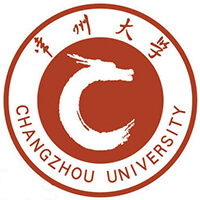高等教育领域数字化综合服务平台

3D柔性心电监测
基于常州大学药学院教授——招秀伯教授对于基于以姜黄素、单宁酸等化学物质为基底,通过化学原理,浸泡吸附等作用,完成对于金属镍、银等在织物表面附着的喷墨打印技术的产业化落地的再探索。
一、项目进展
创意计划阶段
二、负责人及成员
姓名
学院/所学专业
入学/毕业时间
学号
付毅伟
机器人产业学院/计算机科学与技术
2020.10/2024.8
20416114
张强
机器人产业学院/电子信息工程
2020.10/2024.8
20401131
赵灿恒
机器人产业学院/自动化
2020.10/2024.8
20406231
戴毅
机器人产业学院/智能制造
2020.10/2024.8
20409109
三、指导教师
姓名
学院/所学专业
职务/职称
研究方向
招秀伯
药学院/生物工程
博导/教授
生物胶体与生物界面,生物材料,纳米医学(抗菌、抗肿瘤短肽,基因、药物递送),微流控生产纳米颗粒, 2D/3D生物打印,柔性穿戴等。
四、项目简介
基于常州大学药学院教授——招秀伯教授对于基于以姜黄素、单宁酸等化学物质为基底,通过化学原理,浸泡吸附等作用,完成对于金属镍、银等在织物表面附着的喷墨打印技术的产业化落地的再探索。通过对此项技术的应用,在织物上进行电路打印、制作电极,通过对柔性电极的制作,完成对于心电监测的信号采集、实时收集、实时传输,通过深度学习等技术进行获取的心电监测数据读图算法的分析,给予使用者心脏监测数据的实时反馈,并且与医院相关数据库,医疗接诊平台建立联系,提供医疗专业支持,将心脏电路管道心率检测中所读取的心电信号进行医学的正常与非正常划分,将恶性心律突发在发病之初向使用者进行提示,将心脏病发作导致猝死扼杀在摇篮之中。
常州大学
2023-03-13

WMS直播电商仓储管理系统
以WMS仓储管理系统为核心,与OMS订单协同中心、三方接口对接等模块组合,实现企业内外部数据共享和供应链协同。对直播电商订单、出入库、配送、计费、退货、盘点等环节进行全流程场景化服务和统一标准化管理,实现全链协同,快速反应,既保证了直播业务活动的专业、灵活应对,又兼具管理的精细化、准确性。
阿帕数字技术有限公司
2021-06-17

WMS直播电商仓储管理系统
以WMS仓储管理系统为核心,与OMS订单协同中心、三方接口对接等模块组合,实现企业内外部数据共享和供应链协同。对直播电商订单、出入库、配送、计费、退货、盘点等环节进行全流程场景化服务和统一标准化管理,实现全链协同,快速反应,既保证了直播业务活动的专业、灵活应对,又兼具管理的精细化、准确性。
阿帕数字技术有限公司
2021-06-17

袖珍电调谐FM收音机
含电路板、散装元器件、制作说明书等
宁波华茂文教股份有限公司
2021-08-23

16026电接风向风速计
宁波华茂文教股份有限公司
2021-08-23

广东蓝电科技有限公司
佛山市蓝牙电子科技有限公司是经佛山市科委批准的民营科技企业,智能无线广播·听力系统产品专业制造商,中国电教行业协会会员单位。公司坐落在佛山市港口路国家高新技术开发区城南园,公司集研发、生产、销售、工程服务于一体,长期致力于无线电教领域的发展,主要从事校园无线广播系统、无线听力系统、教室无线扩音设备的开发和生产。公司设计生产的“Rendan蓝电”品牌智能编码校园广播系统系列产品及系列调频/定频/音频/红外无线耳机、盒式接收机、校园发射机、班用多功能语言教学发射机、无线音箱、手提无线扩音机,品种齐全,外观精美,性能优良,已被国内数千家大中专院校、中小学及各类教育培训机构用于校园广播、大学外语四、六级考试、高考、中小学英语听力训练考试,教室扩音,深受用户好评,产品已销至韩国。
公司产品制造工艺精良,用料严格,注重科技进步,注重新产品的研发,使产品性能始终处于领先地位。公司产品被中国保护消费者基金会评为“消费者信赖的质量、服务放心品牌”,“首届佛山发明创新成果银奖”。公司除确保产品品质,保持较低维修率外,还对产品提供跟踪式保修服务,定期电话或上门回访,了解产品使用情况,定期派出技术人员上门免费维修,使用户买得放心,用得放心。公司良好的售后服务解决了用户的一切后顾之忧,为公司积累了一大批长期稳定的客户,赢得了广泛的市场赞誉。
公司致力于为教育服务,参加政府招标,为各级各类学校建设数字化校园网、多媒体教室、语音室、微格教室、电子监考系统等各类电教工程。
公司坐落在佛山国家高新技术产业开发区,欢迎各地教育界、电教界的朋友到公司指导、考察。
地址:广东省佛山市港口路国家高新技术开发区6幢
电话:0757-83871860 83137580
邮编:528000
网址:www.ren-dan.com
广东蓝电科技有限公司
2021-01-15

NeurOne高精度脑电测量系统
产品详细介绍NeurOne高精度脑电测量系统一、产品概述:NeurOneEEG/ERP高精度脑电测量系统是芬兰Mega公司开发的创新型脑科学研究,NeurOne认知神经科学测量系统利用世界最新的数字信号处理技术发展,目前是全世界性能最好的神经科学测量系统并提供了更加精确与干净的信号质量、更高的采样率、模块化解决方案,和在数字信号加工过程中利用最新处理手段,使其更加具有灵活性和扩展性。NeurOne是一个多功能系统,广泛应用于不同的认知神经科学、心理与行为科学以及人因工程与工效学等研究领域。二、多模态脑功能研究:NeurOne系统可以与fMRI功能性核磁共振、fNIRS功能性近红外光谱脑成像或者TMS经颅磁刺激器结合进行多模态脑功能实验研究;NeurOne提供了专为与TMS经颅磁刺激器一起使用的功能模块,有特殊还原技术在短延时情况下来消除磁制品影响。先进的头盒设计使AC交流电和DC直流电信号可单独或同时,新的创新Tesla核磁脑电放大器给NeurOne带来MRI兼容性。三、技术功能特点:NeurOne挑战传统的认知神经实验室ERP系统:24Bit高分辨率每通道最高可达80,000Hz超高速采样率高精度放大器技术可升级为NeurOneBrainstorm系统,最高达1200导联NeurOne设备具有很明显的技术领先优势,决不以牺牲数据质量来追求通道的数量、缩短准备时间或者降低成本。其中,NeurOne放大器每个80导,包括8个双极导联,还有8导High-level外接信号输入。由于它的频带足够宽(DC~3500Hz)、采样率足够高(256-1200导,每导可达20000Hz,单导记录最高可达80000Hz),还可用双极或单极同时记录许多其他的生理信号(如ECG心电、EMG肌电、EEG脑电等),一方面可以去除心电和肌电的干扰,另一方面可以进行脑活动过程与其他生理系统的综合研究。同时NeurOne的放大器参数足够高,性能足够稳定,可以进行听觉脑干诱发电位的记录和研究。输入阻抗为1 Gohm,共模抑制比 106 dB。 NeurOne是建立在高保真记录的基础上,能够提供完全原始的高保真数据,不需要屏蔽和滤波,信号不失真。四、脑电超扫描技术NeurOne脑电超扫描系统每个放大器的Headbox由64个单极、8个双极和8个high level输入接口组成,共计80导,每导的采样率能达到20000Hz,最高可以达到80000Hz。团体超扫描脑电测试平台每套系统可提供多至2-30个放大器(共计128/1200导)的协调同步,并可选择支持视频同步。NeurOne系统最高支持1200高导联,并可确保所有通道的同步采集。精心设计的启动和时间锁定功能确保系统中所有通道无相位偏差。所有的通道都使用高质量的24位A/D模拟数字芯片来处理数据。五、多功能应用: 1、Hyperscanning脑电超扫描研究:NeurOne脑电超扫描系统的模块化设计可以提供多达4人实时同步进行脑功能超扫描测试使用系统,并支持完全同步视频的摄影机。使用创新的Brainstorm超扫描技术 (Multi Syncbox),支持多达10个 NeurOne主机系统实时同步,允许最多30人使用30个放大器同时工作–均由一台电脑记录。2、EEG-fNIRS多模态研究: NeurOne多模态脑功能测试系统可以和fNIRS(高密度近红外脑功能成像系统)搭配使用,将EEG和fNIRS进行整合发挥二者的优势,EEG的时间分辨率高,但是空间分辨率低;fNIRS的时间分辨率低,实时性较差,但是空间分辨率高。为了准确、全面、实时的测量大脑在认知过程中的活动,实现全面、实时的脑成像方式无疑是一种更好的策略。结合EEG与fNIRS的多模态脑成像技术在认知神经科学研究中有着很好的应用前景,同时还可搭建多模态脑-机接口系统。3、EEG-fNIRS多模态脑机接口研究:传统基于单一模态脑电(EEG)脑-机接口易受环境噪声干扰、分类精度低等问题,在EEG脑-机接口的研究基础上,引入功能近红外光谱成像(function NearInfrared Spectroscopy,fNIRS)技术,可以自行设计EEG-fNIRS多模态脑-机接口的实验范式,研究最重要的特征提取与分类环节,同时SIMULINK驱动程序可在订单中选购,并提供BCI脑机接口应用程序: BCI2000可免费提供给NeurOne用户。4、EEG-TMS多模态研究: NeurOne多模态脑功能测试系统可以和TMS(经颅磁刺激器)搭配使用。高动态输入范围(+/-430mV的直流电模式以及+/-86mV的交流电模式),较大的模拟带宽(直流输出3500HZ),让TMS保持较低的伪影,使得分析大脑活动的潜伏期更短。此外,TMS拥有硬件弱音功能以及在线伪影消除的软件功能。此外我们增加了EEG采样同步触发新功能。触发器由刺激系统软件发出(ErgoLAB刺激编译软件、Presentation软件, Superlab软件, E-Prime软件),这些触发信号能够通过NeurOne主控器传到TMS设备上。NeurOne可以在持续的EEG采样信号中发出触发脉冲,产生更精确的TMS,减少伪影,更容易进行伪影去除。NeurOne结合TMS案例应用:http://www.kingfar.cn/newsShow_88.html5、EEG-fMRI多模态研究: NeurOne Tesla多模态脑功能测试系统使得同时测量MRI和EEG成为可能。利用NeurOne SyncboxEEG所获得的数据和MRI扫描是同步的(例如4或10MHz)。高动态输入范围(+/- 430 mV的直流电模式和 +/-86 mV的交流电模式)结合模拟带宽(直流输出3500 Hz) ,使利用高梯度力度获得精确信号毫无风险。应用领域:EEG/EP测量ERP研究EEG +TMS结合多模态脑功能研究EEG +fMRI结合多模态脑功能研究多通道EMG肌电图研究群组超扫描研究(多达4人4视频摄像机完全同步)其他神经科学的测量其他心理测量 NeurOne放大器参数:•每个Headbox 有64导单极导联;•每个Headbox 有16导双极导联;•每个Headbox 有16导High Level 导联;•采样率:512导同时采集,每导可达20,000 Hz ;•所有导联均同步采集信号,最大支持1200高导联,•支持超扫描技术Hyperscanning最多支持30人同步采集团体脑电数据;•支持多模态技术,含EEG-TMS,EEG-fNIRS,EEG-fMRI等研究技术方案•A/DResolution:24 Bit ;•输入阻抗:1 GOhms ;•共模抑制比(CMRR):106 dB ;•带宽(Bandwidth):DC ~ 3500 Hz ;•低通滤波:DC(10000 Hz);-3 dB(7000 Hz);•高通滤波: -3 dB(0.16 Hz);•输入噪声(InputNoise.)(DC Mode):<0.8uV RMS (0-200 Hz),<2.0uV RMS(DC-3500 Hz) ;•输入范围(FullScale Input Range)(DC Mode):+/- 430 mV ;•系统增益(SystemGain)(DC Mode):10 ;•灵敏度(Sensitivity)(DC Mode):51 nV/bit ;•输入噪声(InputNoise.)(AC Mode):<0.6uV RMS (0.16-200 Hz),<1.5uV RMS (0.16-3500 Hz) ;•输入范围(FullScale Input Range)(AC Mode):+/- 4.3 mV ;•系统增益(SystemGain)(AC Mode):50 ;•灵敏度(Sensitivity)(AC Mode):0.51 nV/bit ;•数字化(TTL)输入:8 Bit非隔离输入触发,2个隔离输入/输出•High Level 输入范围:+/- 5 V ;或+/- 10 V•阻抗:1K Ohm ~ 50 K Ohm ;•Headbox 体积(h x w x d):20 x 7 x 16cm, 每 64 导;•Headbox 重量:0.68 kg。•Main unit体积(H x W x D):33×12×27 cm,160导系统主机•Main unit重量:3.6•安全规范:EN60601-1,EN 60601-1-1,EN 60601-1-2EN60601-1-4,EN60601-2-26NeurOne用户请注意:注意 – 仅用于科研,不用于诊断过程,设备可用于非临床实验研究。PUBLICATIONS USING NEURONE EEG/ERP ORNEURONE TESLA :1. A platform for realtime processing of biosignalsfor monitoring purposes. PITKÄNEN,PAAVO. Master of Science Thesis. Tampere University of Technology. May 2012. InFinnish2. A New Platform for Realtime BCI Applications. Paavo Pitkänen1,2,Jukka Kinnunen2, Tarmo Lipping1 (IEEE,Senior Member). 1 Tampere University Of Technology, 2 Mega Electronics Ltd. Poster at Berlin BCI meeting 20123. Visual ERP P3 amplitude and latency in standaloneand embedded visual processing task. Conf Proc IEEE Eng Med Biol Soc. 2011;2011:781-4.doi: 10.1109/IEMBS.2011.6090179. Korpela J, Huotilainen M. Brain Work ResearchCentre, Finnish Institute of Occupational Health, Helsinki, Finland. jussi.korpela@ttl.fi4. The effect of automatic blink correction onauditory evoked potentials. Korpela,J. ; Brain Work Res. Centre, Finnish Inst. of Occupational Health, Helsinki,Finland ; Vigario, R. ; Huotilainen, M. 10.1109/EMBC.2012.63460095. Breakfast high in whey protein or carbohydratesimproves coping with workload in healthy subjects. Nora Sihvola a1, Riitta Korpela a1, Andreas Henelius a2, Anu Holm a2 a3,Minna Huotilainen a2, Kiti Müller a2,Tuija Poussa a4, Kati Pettersson a2,Anu Turpeinen a5 and Katri Peuhkuri a1 c1.a1 Institute of Biomedicine, Medical NutritionPhysiology, Pharmacology, University of Helsinki, PO Box 63, HelsinkiFIN-00014, Finland. a2 Finnish Institute of Occupational Health,Brain and Technology Team, Topeliuksenkatu 41 aA, Helsinki FIN-00250, Finland. a3 Department of Clinical Neurophysiology, Hospital District of Satakunta,Sairaalantie 3, Pori FIN-28500, Finland a4 Stat-Consulting,Vahverokatu 6, Nokia FIN-37130, Finland a5 ValioLimited, PO Box 30, VALIO, Helsinki FIN-00039, Finland British Journal ofNutrition, 20136. Pilot Study ofAcupuncture Point Laterality: Evidence from Heart Rate Variability. Guangjun Wang, Yuying Tian, ShuyongJia,Wenting Zhou, and Weibo Zhang.Institute ofAcupuncture and Moxibustion, China Academy of Chinese Medical Sciences, 16Dongzhimennei, Nanxiaojie, Dongchen District, Beijing 100700, China Evidence-BasedComplementary and Alternative Medicine. Volume 2013 (2013), Article ID 476064,7 pages http://www.hindawi.com/journals/ecam/aip/476064/7. Algorithm forautomatic analysis of electro-oculographic data.Kati Pettersson1*, Sharman Jagadeesan1, Kristian Lukander1,Andreas Henelius1, Edward Hæggström2 andKiti Müller11Brain Work Research Center, FinnishInstitute of Occupational Health, Topeliuksenkatu 41aA, Helsinki 00250,Finland.2Electronics Research Laboratory, Departmentof Physics, University of Helsinki, P. O. Box 64, Gustaf Hällströmin katu 2,Helsinki FIN-00014, Finland.BioMedicalEngineering OnLine 2013 12:110.8. Brain-statedependent brain stimulation: Real-time EEG alpha band analysis using slidingwindow FFT phase progression extrapolation to trigger an alpha phase locked TMSpulse with 1 millisecond accuracy.Christoph Zrenner,Johannes Tünnerhoff , Carl Zipser, Florian Müller-Dahlhaus , Ulf ZiemannCenter forNeurology, Tübingen University, Hoppe-Seyler-Str. 3, 72076 Tübingen, GermanyBrainStimulation: Basic, Translational, and Clinical Research in Neuromodulation:Volume 8, Issue 2, A1-A10, 169-4389. Behavioral andelectrophysiological evidence for fast emergence of visual consciousness.Henry Railo1,2,3,*,Antti Revonsuo1,2,3,4 and Mika Koivisto1,2,31Department of Psychology, University ofTurku, 20014, Finland; 2Centre for Cognitive Neuroscience, University of Turku, 20014, Finland;3Brain and Mind Centre, University of Turku,20014, Finland; 4School of Bioscience, University of Skövde,SE-54128, SwedenNeuroscience ofConsciousness, 2015, 1–1210. Fastdetermination of MMN and P3a responses to linguistically and emotionallyrelevant changes in pseudoword stimuliSatu Pakarinen,Laura Sokka, Marianne Leinikka, Andreas Henelius, Jussi Korpela,MinnaHuotilainenFinnish Institute ofOccupational Health, Helsinki, FinlandNeuroscienceLetters 577 (2014) 28–3311. Alterationsin attention capture to auditory emotional stimuli in job burnout: Anevent-related potential studyLaura Sokka a, Minna Huotilainen a, Marianne Leinikka a, Jussi Korpela a, Andreas Henelius a,Claude Alain b,c, Kiti Müller a,Satu Pakarinenaa Finnish Institute of Occupational Health,Topeliuksenkatu 41 a A, 00250 Helsinki, Finlandb Rotman Research Institute, Baycrest Centrefor Geriatric Care, 3560 Bathurst Street, Toronto, Ontario, Canada M6A 2E1c Department of Psychology, University ofToronto, Toronto, Ontario, CanadaInternationalJournal of Psychophysiology 94 (2014) 427–43612. Brain-statedependent non-invasive brain stimulation using closed-loop real-time EEG signalanalysis to trigger a TMS pulse with millisecond accuracyC. Zrenner, J.Tünnerhoff, C. Zipser, F. Müller-Dahlhaus, U. ZiemannUniversity ofTübingen, Center of Neurology, Tübingen, GermanySocietyProceedings / Clinical Neurophysiology 126 (2015) e63–e17013. BilateralHegu Acupoints Have the Same Effect on the Heart Rate Variability of theHealthy SubjectsWang Guangjun, TianYuying, Jia Shuyong, ZhouWenting, and ZhangWeiboInstitute ofAcupuncture and Moxibustion, China Academy of Chinese Medical Sciences,Beijing 100700,ChinaHindawi PublishingCorporationEvidence-BasedComplementary and Alternative MedicineVolume 2014, ArticleID 106940, 5 pages (http://dx.doi.org/10.1155/2014/106940)14. AcupunctureRegulates the Heart Rate VariabilityGuangjun Wang,Yuying Tian, Shuyong Jia, Wenting Zhou, Weibo ZhangInstitute ofAcupuncture and Moxibustion, China Academy of Chinese Medical Sciences,Beijing, ChinaJ AcupunctMeridian Stud 2015;8(2):94-9815. Closed-LoopNeuroscience and Non-Invasive Brain Stimulation: A Tale of Two LoopsChristoph Zrenner,Paolo Belardinelli, Florian Müller-Dahlhaus and Ulf ZiemannBrain Network andPlasticity Laboratory, Department of Neurology and Stroke and Hertie-Institutefor Clinical Brain Research, University of Tübingen, Tübingen, GermanyFrontiers inCellular Neuroscience, April 2016, Volume 10, Article 9216. Physiologicalprocesses non-linearly affect electrophysiological recordings duringtranscranial electric stimulationNoury, N., et al.,NeuroImage (2016), http://dx.doi.org/10.1016/j.neuroimage.2016.03.06517. Job burnout is associated with dysfunctions inbrain mechanisms ofvoluntary and involuntary attention Laura Sokka, Marianne Leinikka, JussiKorpela, Andreas Henelius, Lauri Ahonen,Claude Alain, Kimmo Alho, MinnaHuotilainen, http://dx.doi.org/10.1016/j.biopsycho.2016.02.01018. Shifting ofattentional set is inadequate in severe burnout: Evidence from an event-relatedpotential studyLaura Sokka, MarianneLeinikka, Jussi Korpela, Andreas Henelius, Jani Lukander, Satu Pakarinen, KimmoAlho, Minna Huotilainen. PII: S0167-8760(16)30853-4 DOI: doi:10.1016/j.ijpsycho.2016.12.004
北京津发科技股份有限公司
2021-08-23

风电专用电动机
助力低碳清洁能源发展,保障海上风电可靠安全运行。
德州恒力电机有限责任公司
2021-08-26

氯离子电通量测定仪
产品详细介绍检测方法:电量法执行标准美国ASTM C1202及AASHTO T277-05标准国家标准《普通混凝土长期性能和耐久性能试验方法》(GB/T50082-2009)客运专线高性能混凝土暂行技术条件(铁建设[2005]160号)海港工程施工混凝土结构防腐蚀技术规范JTJ275-2000混凝土氯离子电通量测定仪(JG/T261-2009)产品型号:NJ-DTL生产厂家:北京耐久伟业科技有限公司用途概述混凝土钢筋锈蚀是影响混凝土耐久性的首要因素,据统计,由于钢筋锈蚀引起的混凝土耐久性损伤占所有损伤的40%以上,而氯离子侵蚀则是造成钢筋锈蚀的主要诱因。DTL混凝土氯离子电通量测定仪用于混凝土耐久性能重要指标——混凝土抵抗氯离子渗透性能(密实度)的测量,测试指标为混凝土试件的6小时电通量值(库仑),从而快速评价混凝土抵抗氯离子渗透的能力。产品特点1.嵌入式微机控制,停电及掉电数据保存,工艺先进、制作精良,性能可靠稳定,测量精度高2.大屏幕液晶直现,具备实时显示、打印和分析计算功能,可脱离电脑及上位机直接使用,方便户外现场检测3.标准RS232串口通讯,连接全自动上位机软件,可输出电通量试验报告并生成曲线,进行打印分析及存档4.短路自动保护设计,避免短路造成仪器损伤5.进口材料制作夹具,测量精度高,使用灵巧方便6.每次可同时测试两组(6块)、三组(9块)、四组(12块)或五组(16块)混凝土试块7.附最新款智能型一体式真空饱水机相关参数•评测能力:C30~C50硅酸盐水泥混凝土•工作电压:~220VAC 60VDC•测试通道:6通道、9通道、12 通道、16通道可选•工作环境:0℃~50℃ 湿度≤75%•量测误差:<1%系统配置混凝土氯离子电通量测定仪试样夹具NJ-BSJ型混凝土智能真空饱水机测试步骤1.将混凝土标准试样切割成厚度为 50mm的试块;2.将试样在混凝土智能真空饱水机中进行真空饱水;3.将真空饱水后的试样安装在试样夹具上;4.向固定好的混凝土试样夹具两极分别注入NaCl (负极)、NaOH (正极)溶液;5.接通混凝土电通量测定仪的电源及试样夹具的正负极;6.连接测试主机,通过测试软件控制,6小时得出测试结果;7.数据自动保存并可打印数据。
北京耐久伟业科技有限公司
2021-08-23

多频率电火计时器
产品详细介绍
河南省商城教学仪器厂
2021-08-23




